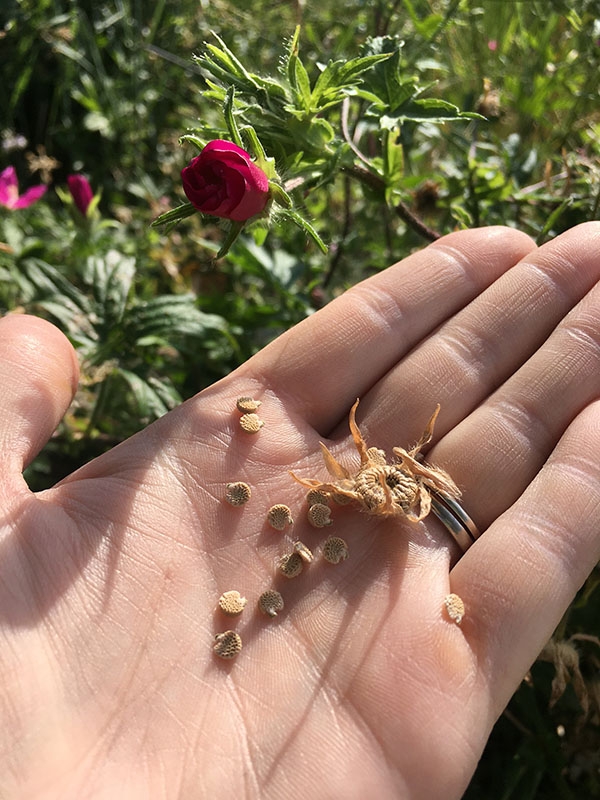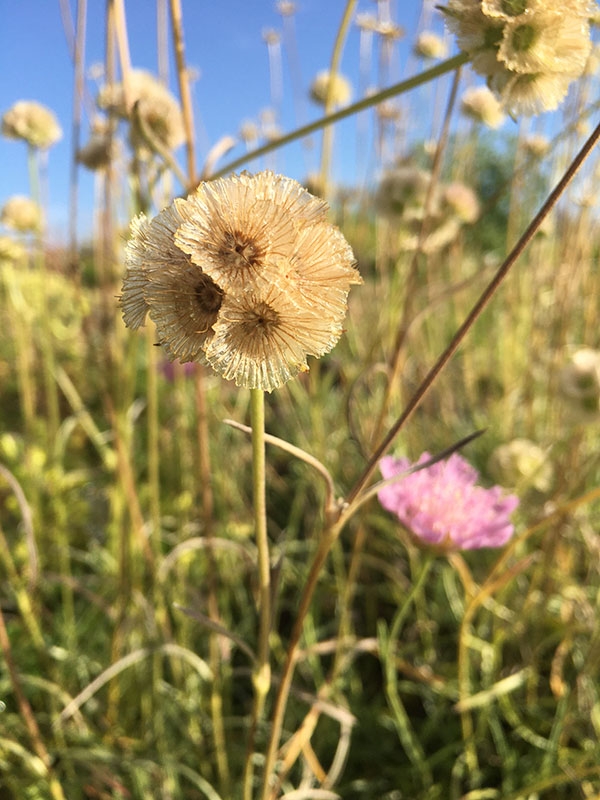Seed Collecting for the Home Gardener
The boom of colors and blooms that reign down at Denver Botanic Gardens this time of year is astounding. From the first gardens you see as you walk through the front gate – such as Roads Water-Smart Garden – to one of the last, our world-famous Rock Alpine Garden, the blooms never disappoint. These blooms are ensured year after year with the help of seed collecting. Often these seeds are grown over the winter in the greenhouses and planted once again the next spring for more awesome blooms.
You can practice seed-collecting as well in your home garden. Not only can it provide an opportunity to preserve your garden flowers, perennials and annuals alike, seed harvesting lends a way to share your lovely favorites with friends, family and neighbors.

Seed from Winecups (Callirhoe Involucrata) at natural seed dispersal. Photo: Brooke Palmer
Finding the right time to harvest
As the flowers fade, the fruits and seeds begin to form. Collecting at the right time can be tricky, because if you harvest the seeds and fruits too early you risk collecting underdeveloped seeds that will not be able to germinate later. You may find yourself playing “I spy some seeds” all summer long to harvest at the right time, especially since not all plants bloom and go to seed at the same time. There are plenty of exceptions, but a trick I like to do for most plants is to look for old flower heads or fruits to be brown and dry. If the seeds begin to fall off the plant at a natural dispersal state, they are indeed ready to go!
How to collect
Once you get to this stage, the collecting itself is easy. Make sure you have some paper or cloth bags on hand for collecting; this will ensure your seeds stay nice and dry when you get to point of storing them. For this reason, avoid plastic bags. I love repurposing paper bags from restaurants and grocery stores just for collecting seeds. When you see seeds that are ready to harvest, you can either snip the dried fruits right into the bags or hand-pluck them if there are not too many. Don’t forget to write down what you have collected as you go.
Storing your seeds
At this point you want to make sure your seeds are dried down and cleaned before storing them for the winter. Seed cleaning is a topic for a different day, but for most seeds you want to clean them from their fruits and chaff (other dried up flower parts) and store in paper bags or envelopes. They should be stowed in a dark, cool room or closet until you are ready to plant in the fall or spring.

A flowerhead of Pincushion flower (Scabiosa graminifolia var. compacta), ready to be harvested. Photo: Brooke Palmer
If you know where to look, seed harvesting can be a great way to insure you have the same lovely flowers year after year, and a hidden joy in your regular garden care.
Add new comment